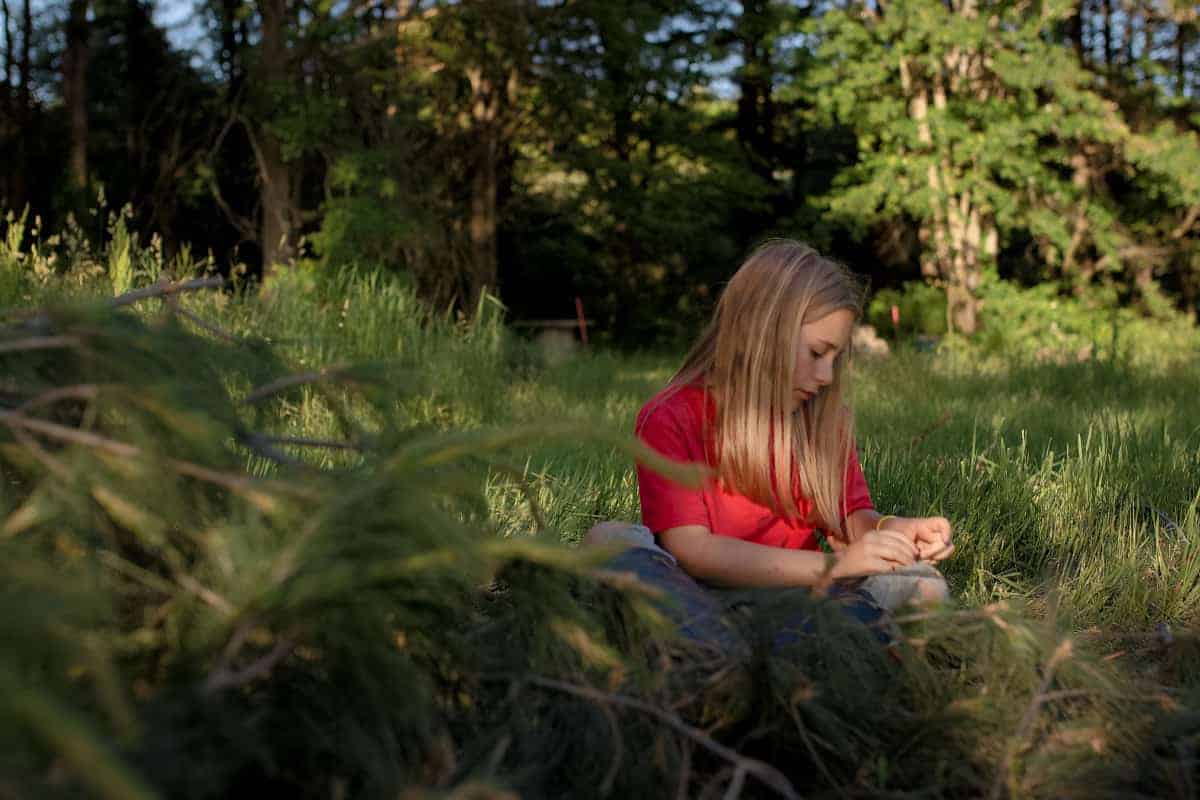Poison ivy, mosquitoes, and ticks sure do make it less pleasant to spend time outside in the summer, but not impossible! Getting outside is always worth it and more important than ever for kids right now. This time of year, we get a ton of questions from concerned parents about how to keep these summertime pests and nuisances away. Spoiler alert – it’s not always possible. And in that case, how should you treat bites and rashes on kids when encounters with poison ivy, mosquitoes and ticks happen. Today, Leslie Alvis, Ohio mom of four, is here with all the information you need to know to prevent and treat poison ivy, mosquito, and tick bites. She shares her experience battling these pesky parts of nature and how her family handles their inevitable encounters.
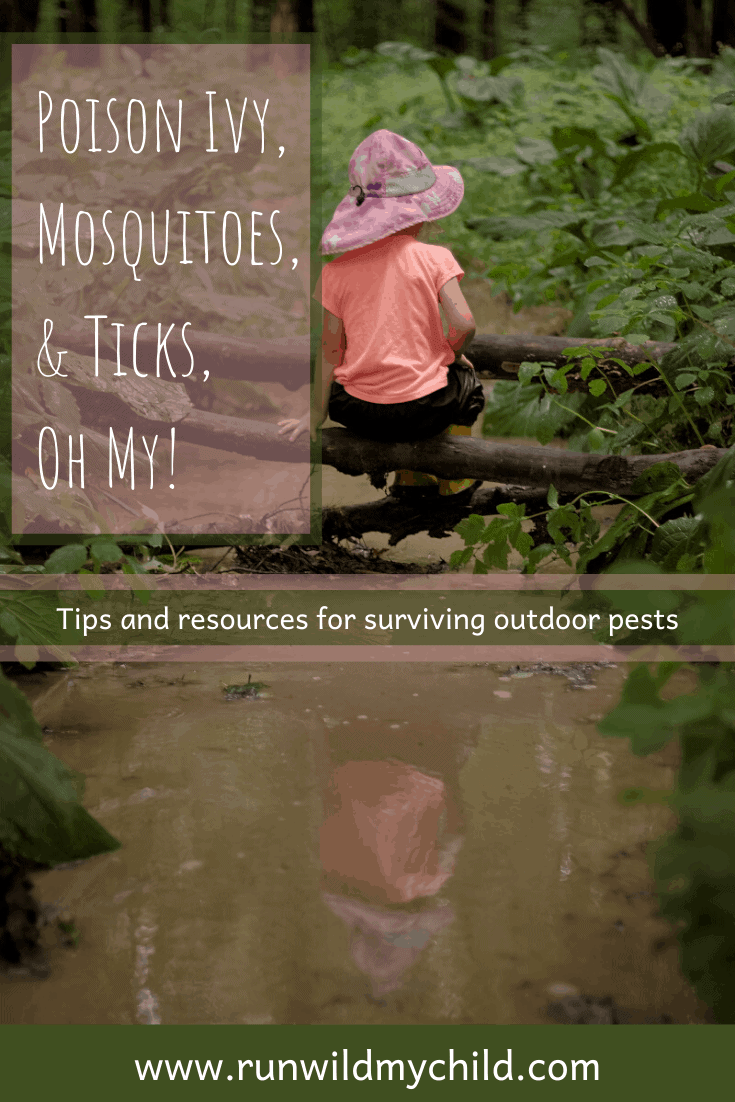
The threat is real
Have you ever felt like outdoor threats are worse now than when you were a kid? If you do any research about ticks, poison ivy, or mosquitoes, you may decide it’s true! And you wouldn’t be wrong. Poison ivy is actually thriving in the increased carbon dioxide levels on the earth right now, making it more prolific and more potent. Thanks to the spread of the black-legged and dog ticks, Lyme Disease and Rocky Mountain Spotted Fever are on the rise across the United States. And mosquito-borne illnesses lurk behind the whining of mosquitoes, even in your backyard.
If you spend some time Googling any of these problems, you may decide the safest thing is just to keep your children indoors! But being outdoors holds many more benefits than risks. The memories and skills our children develop outside will last so much longer than the itch of poison ivy or mosquito bites. We just need to take extra measures to identify and prevent these threats. Today I’d like to share some tips and resources with you about poison ivy, mosquitoes, and ticks.
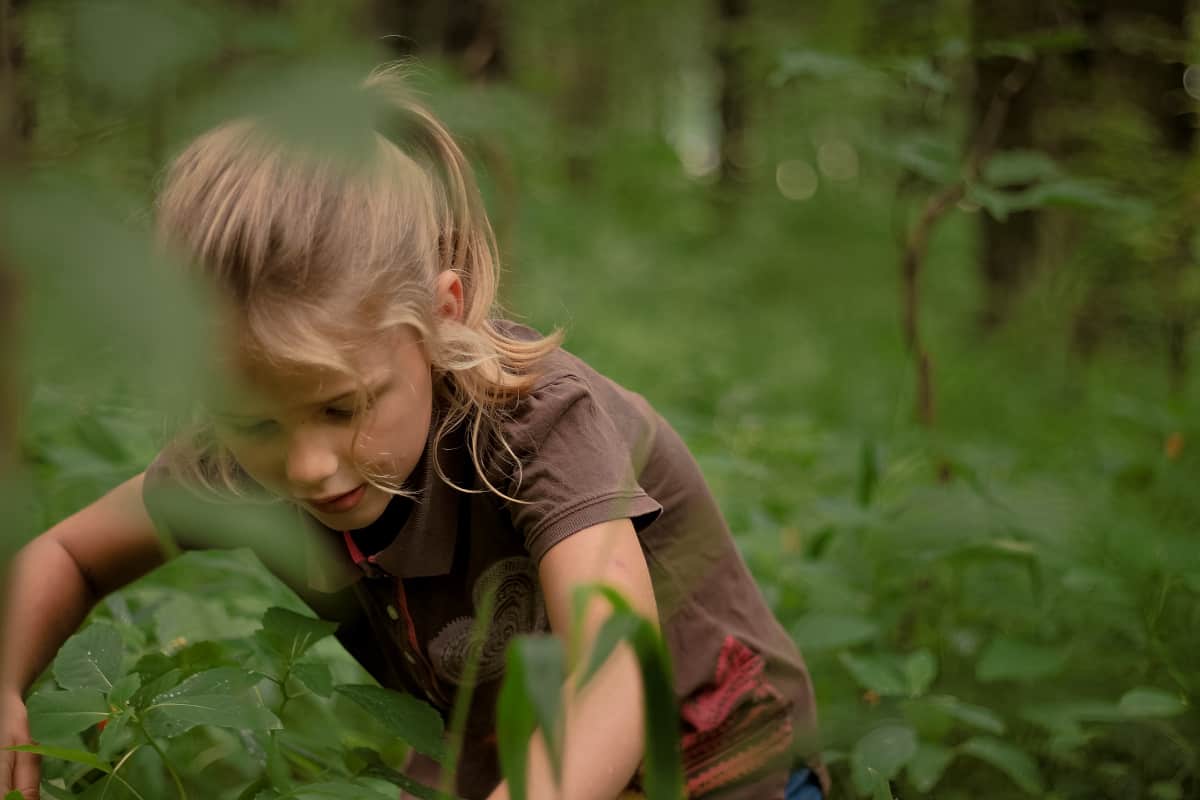
Summertime pests
I love being outside, always. I’m also passionate about getting my kids outside in every season, despite the obstacles. Every season has them. Here in Ohio, we face a triple scourge in the warm months—poison ivy, ticks, and mosquitoes. They threaten the safety and fun of our everyday adventures outside. But despite these pests, I want my children to experience the wonder of life outdoors. I want them to know how to forage for wild berries, to hear the echo of birdsong in the thick summer woods, to design and build a wilderness fort with their own hands, to clear a homestead from an overgrown patch of land. Sometimes, though, making these adventures a reality is hard. There are bugs, poisonous plants, and things that bite and itch and sting.
We’ve always spent a lot of time outside, but this year is especially outdoor-oriented for us. We just sold our house in town and are renting a house in the country while we build our own homestead just down the road. We are now living and working on the edge of a large, swampy woods that is swarming with poison ivy, ticks, and mosquitoes. Dealing with these problems, and doing my best to protect my children from them, is literally my everyday.
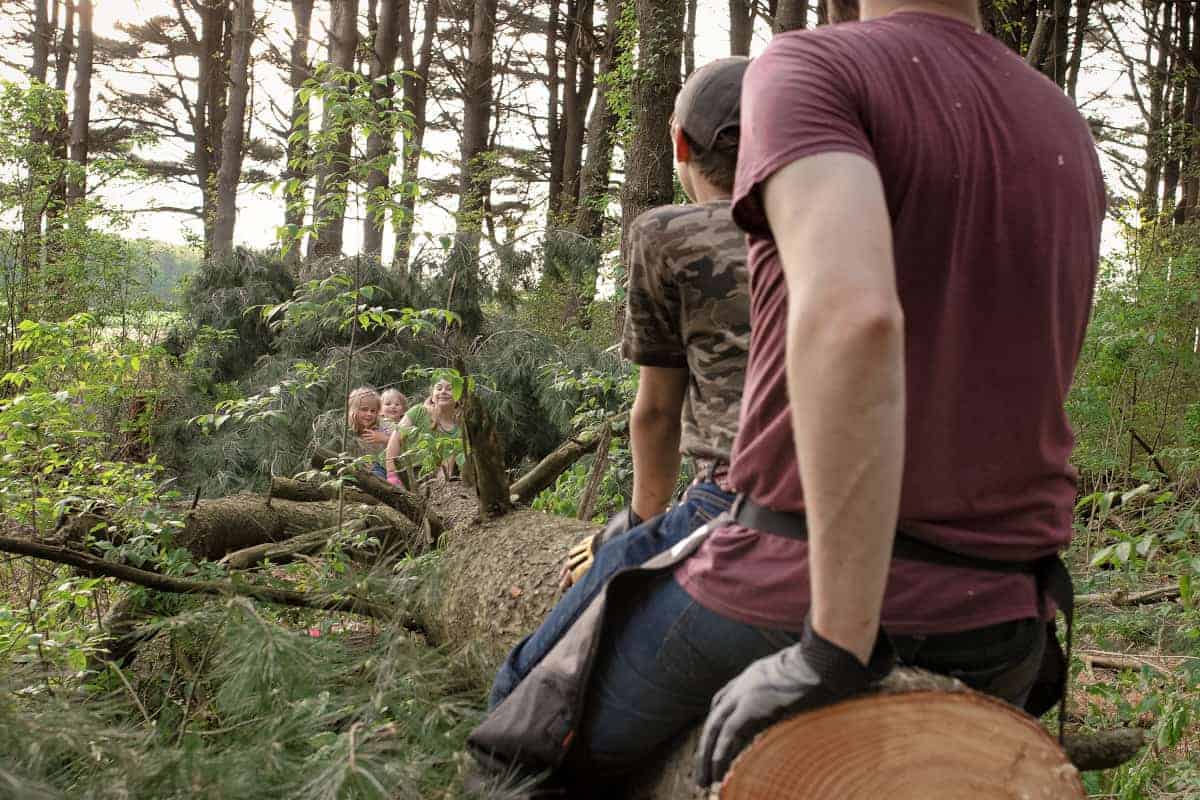
Poison ivy
Let’s start with poison ivy, because I’m pretty sure (despite all the turbulent worldwide events) 2020 is going down in my family’s history as “The Year of Endless Poison Ivy.” I’ve jokingly dubbed our homestead “Poison Ivy Acres.” I grew up in the country, hiking and playing in the woods, and I have never seen poison ivy like on our property.
Our poison ivy is vibrant, huge, and absolutely everywhere! It hangs overhead from the trees, snakes through the underbrush, and has aggressively infiltrated the meadow. It’s even coming up in my garden. If we step off the driveway, we’re in poison ivy. Sometimes up to my toddler’s armpits. Despite our constant efforts to kill it off, it’s the scourge of our summer. But we’re also determined not to let it ruin our lives, or keep us from working as a family on our dream.

Poison ivy identification
Poison ivy is a vined plant best identified by its groupings of three leaves, often with jagged edges. The old adage, “Leaves of three, let it be” helps with quick and easy ID. I recently learned the second line to that saying: “Vines with hair, beware.” Poison ivy is often found growing low to the ground on the edges of wooded and wild areas, but it also uses its hairy vines to climb trees. Poison ivy oils, found on not only the leaves but also the vines and the roots, contain a strong irritant called urushiol. These oils cause most people to break out in an itchy, blistery rash 24-48 hours after exposure to the skin.
The oils from poison ivy can remain active on surfaces for up to five years and be transferred to your skin from your clothes, your pets, your kids’ boots….the list goes on and on. Poison ivy is considered most potent in the spring and summer, when the new leaves come out, but you can contract a rash at any time of year from the stems and roots of the plant. It can also survive for YEARS on surfaces, so it’s possible to get a poison ivy rash in the middle of winter from a pair of boots sitting in your garage.
Although innocuous-looking, poison ivy is nasty, mean stuff. But can you deal with it? Yes, you certainly can!

Poison ivy prevention
The best way to avoid getting poison ivy is to keep the oils from coming in contact with your skin. Wear long pants and boots when you know you might be walking through poison ivy. Obviously, the best prevention would be to avoid any contact with the plants at all. Sometimes that’s possible. You’re walking along a nice trail through the forest, you notice some poison ivy leaves growing along the edge of the path, and you steer your whole family away from it. Simple enough.
But what about that unconcerned toddler sitting in the middle of a poison ivy patch? What about when your kids dash ahead to a stream and as you follow, you realize they’ve run blindly through three-leaved greenery? In shorts! What about when you’re working to clear and build a homestead that’s knee-deep in poison ivy? (That’s me! Plus my four children. And my husband. And our dog.)
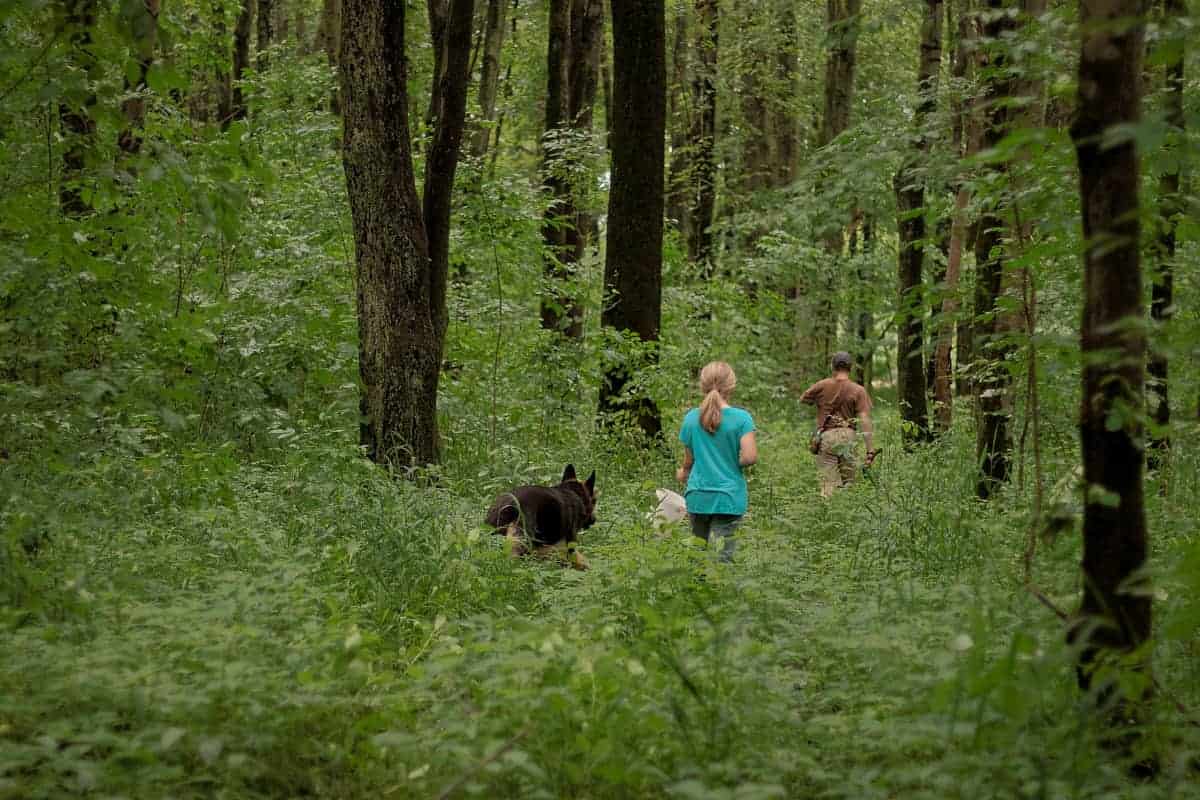
Washing to prevent poison ivy
The first thing to do is wash the poison ivy oil off. If you can wash the exposed skin with soap and water within a reasonable amount of time–several hours for most people–chances are you won’t get a poison ivy reaction, or at least not much of one. Since our family can’t avoid exposure right now, washing is our primary defense.
Every time we step off the driveway or garden area on our homestead, everyone gets scrubbed from head to toe as soon as we get home. (Pro tip: use a shower, not a bath, so your children aren’t sitting in the oils you’re trying to wash off.) All the clothes go straight in the wash. On a perfect day, I’d wipe down boots and wash the dog, too, but let’s be honest…that doesn’t really happen. I’m sure some of the rashes we’ve gotten have come from second-hand exposure.
For washing off poison ivy oils, we typically use an old-fashioned laundry soap, Fels-Naptha. It’s cheap and effective. An all-natural option is a Poison Ivy/Oak bar like this. Some people have told me you should use a lye-based soap. The point is to get the oils off. This really works.
Despite spending long days working in an astonishing amount of poison ivy, we have had surprisingly few major reactions this year. Yes, we keep getting little patches here and there. But, as long as we wash well, we avoid the worst of it. (My older kids sometimes skip washing after a quick excursion through the woods. They definitely regret it later!)
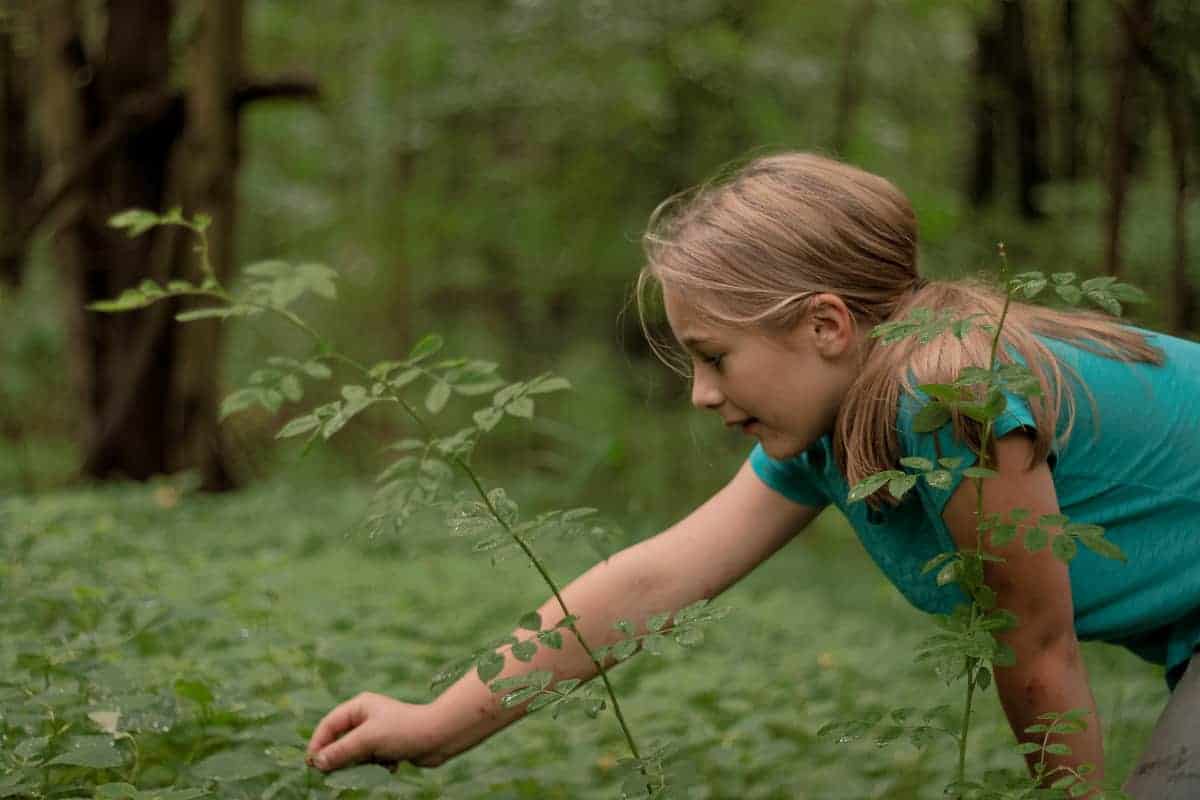
Explaining poison ivy to kids
Side note about explaining to kids the way the oils spread and why it’s so important to wash all over. I was having a hard time getting this concept across to my littles, until I saw my oldest daughter playing in charcoal from an old burn pile. Her hands, her arms, and her face were all covered in black soot. And she had no idea she had smeared it all over herself. So, I showed her in the mirror, and explained that poison ivy oils spread by touch in exactly the same way. It finally made sense to her why you have do more than just wash your hands to get rid of poison ivy.
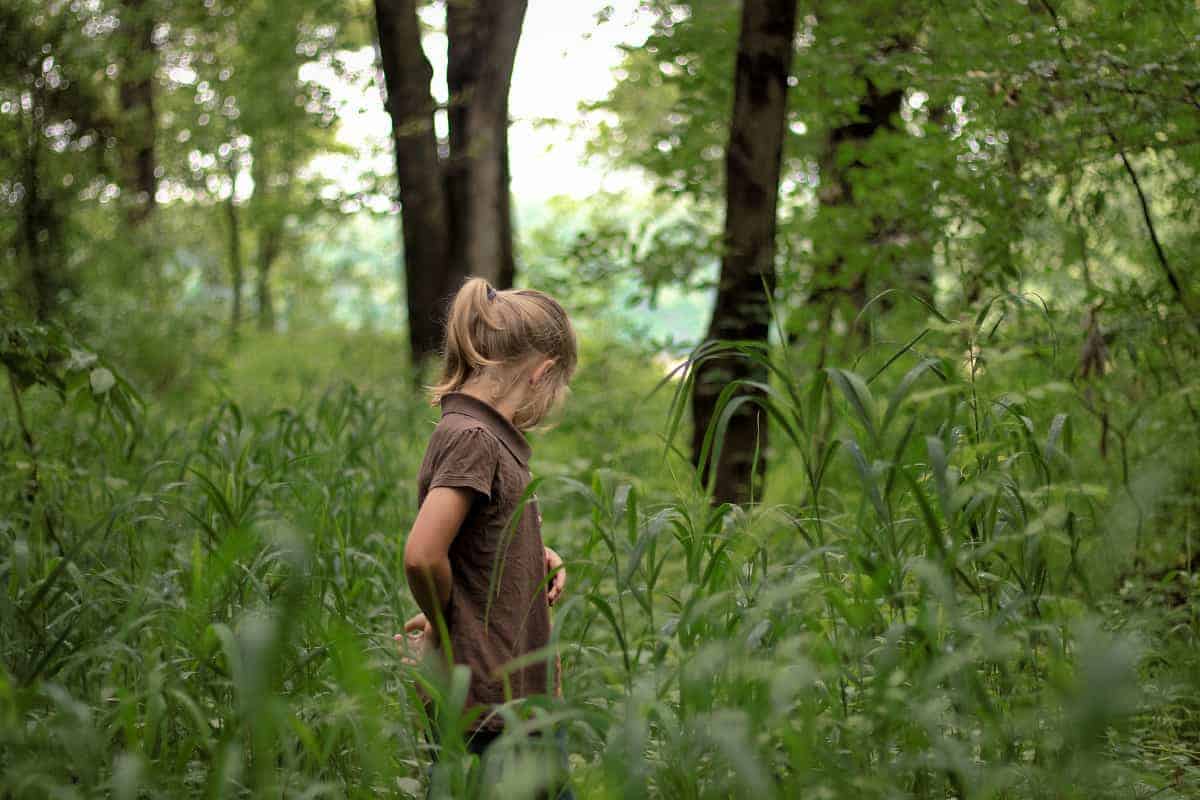
On-the-spot poison ivy remedies
What about when you can’t get to soap and water right away? You’re out hiking and hours from getting your kids in the shower and someone just rolled in poison ivy. Don’t panic—there are a couple of ways to counteract those oils. Jewelweed is a natural antidote to poison ivy and often grows in shady areas nearby. If you don’t mind a little herbal therapy, just pick some jewelweed leaves, crush them in your hands, and rub the exposed area of skin with the gooey leaves. It counteracts the oils naturally.
If you’re not quite into something that green and juicy, alcohol-based hand sanitizer will also help cut the oils and clean the skin. We use both of these options when we know we won’t be able to wash with soap and water soon.
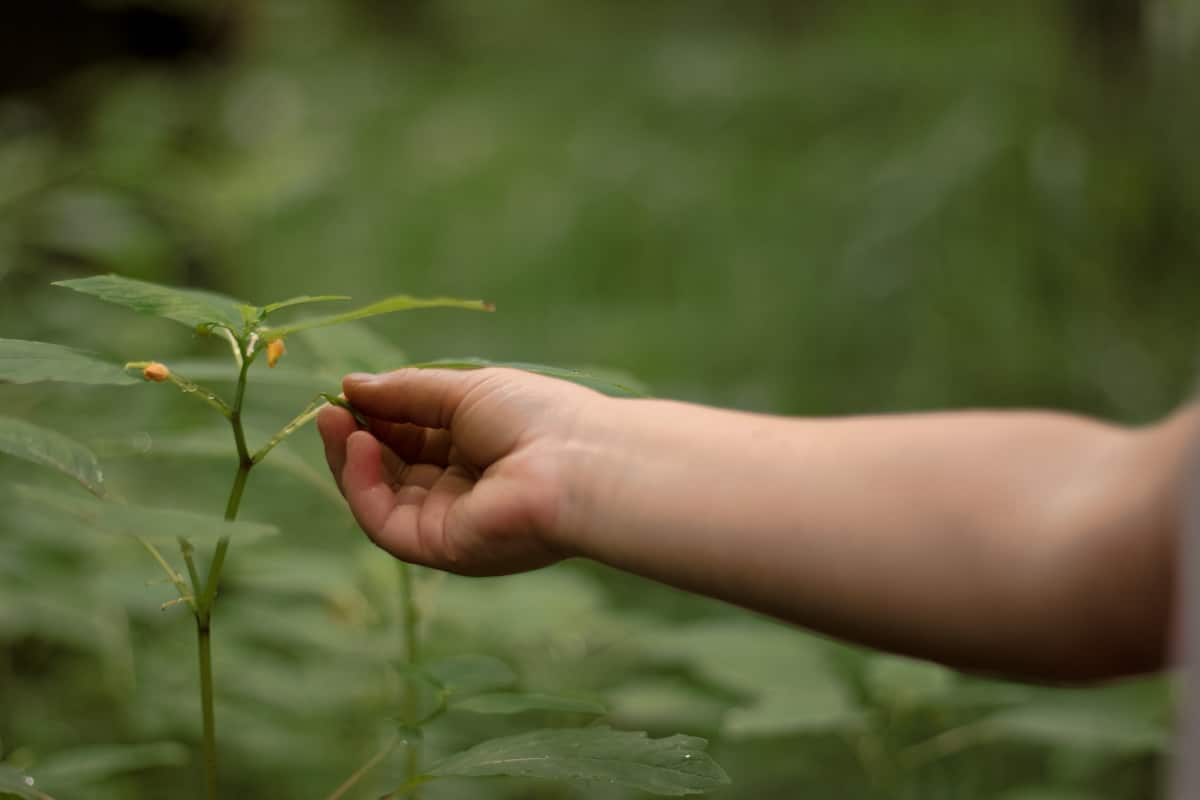
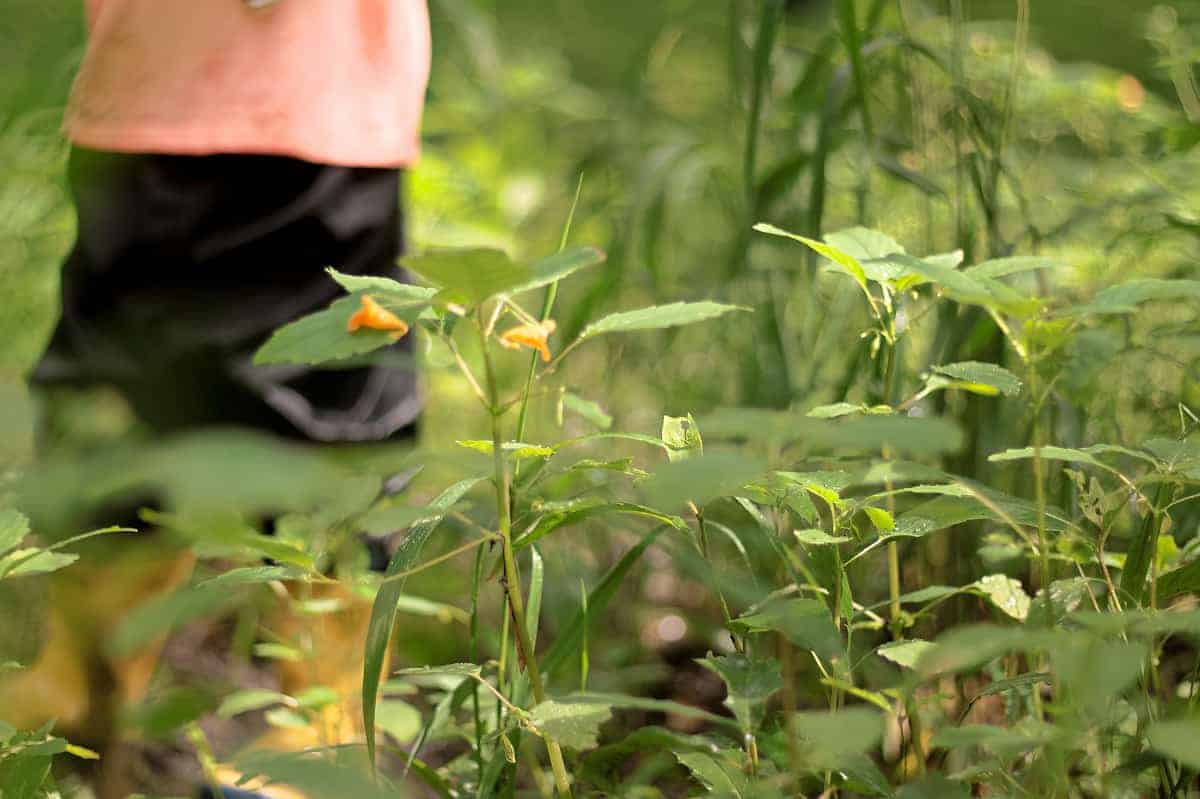
Poison ivy treatment
Kids tend to get into poison ivy more than adults. They also have a different idea about how to “scrub up” after poison ivy exposure. Often you will have someone with some red, itchy patches a couple of days after a wilderness adventure. Poison ivy is miserable, but it is treatable.
Calagel is a favorite over-the-counter remedy for the itching of poison ivy reactions. Jewelweed salve is a natural alternative and seems effective as well. We’ve also been using these poison ivy pills. They really do seem to help. When worst comes to worst, an antihistamine (like Benadryl) will help relieve the misery. The rash usually clears up within several days without needing medical attention, but you can always call your doctor if you’re worried about a severe poison ivy reaction.
Ticks
Ugly, small, and persistent, ticks are an insect that carry a variety of diseases. They transmit illness by burrowing their heads under the skin of their victims and staying there for a long period of time. Tick-borne diseases are nothing to take lightly. As someone with a close relative who contracted Lyme Disease from a tick bite and remained diagnosed for months, I’ve seen firsthand the effects of Lyme Disease. It really terrifies me. But I have to remember the facts. Tick bites are often preventable and many times harmless. And tick-borne illnesses, when caught promptly, are treatable!
Different kinds of ticks live in different areas of the country and carry various diseases. You can learn more about identifying ticks here. They are most commonly found in tall grasses and thick woods, but can appear anywhere. We found one on our two-year-old this morning as she was getting in the car to go to church. I think it came from the dog…but I really have no clue.
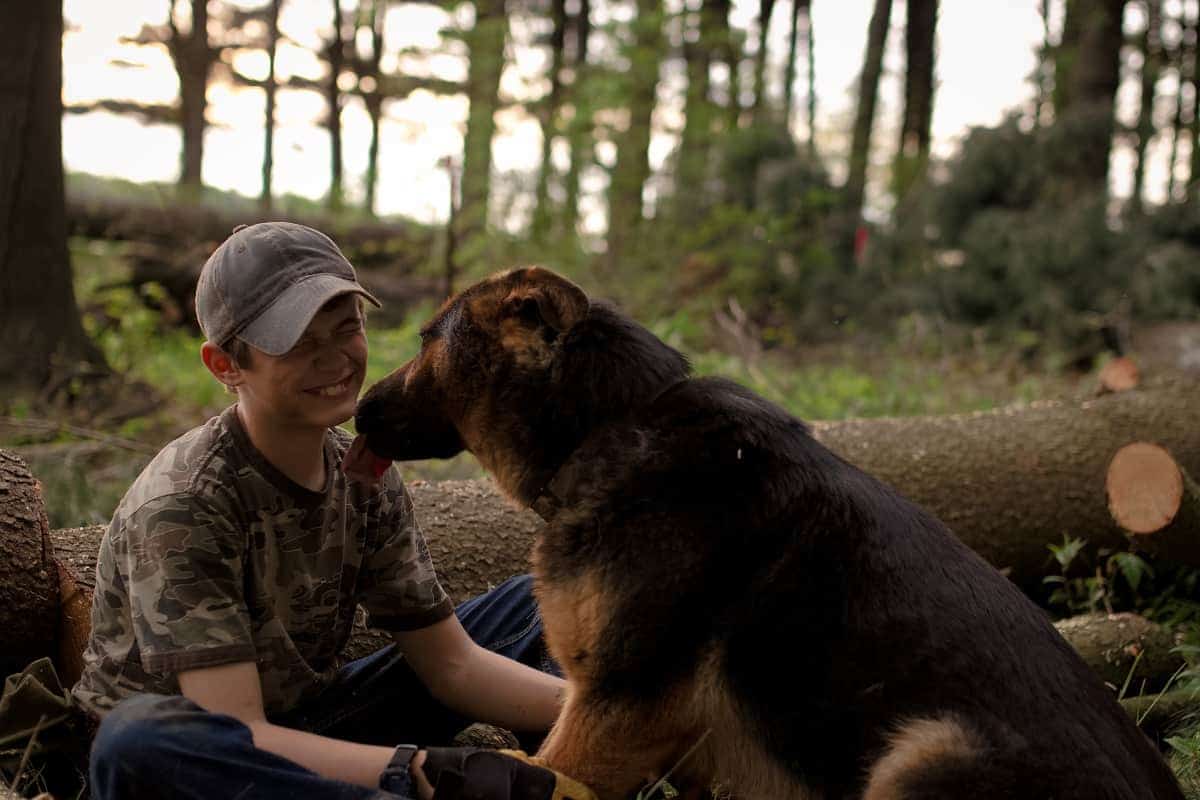
Tick Prevention
Preventing tick bites is fairly straightforward. If you know you’ll be in an area with lots of tick activity, dress appropriately and use an insect repellent rated for ticks. Dress yourself and your children in long pants, tucked into your socks, and tall boots. Tuck in shirts. All these measures give ticks fewer places to bite. They climb until they find exposed skin, so it also gives you more time to notice them and harmlessly brush the tick off your clothing.
But let’s be real—are you really going to get your offspring in long pants and tall boots for a hike on a 90-degree summer day? Sometimes that just won’t happen. So that’s where insect repellent comes in! Spray your clothes, not just your exposed skin, to help discourage ticks. If you aren’t sure what kind of repellent to use, try this helpful tool here. For a plant-based DEET free option that works great on kids and pets, try TickWise from 3 Moms Organics (get 10% your order with the code RUNWILD10).
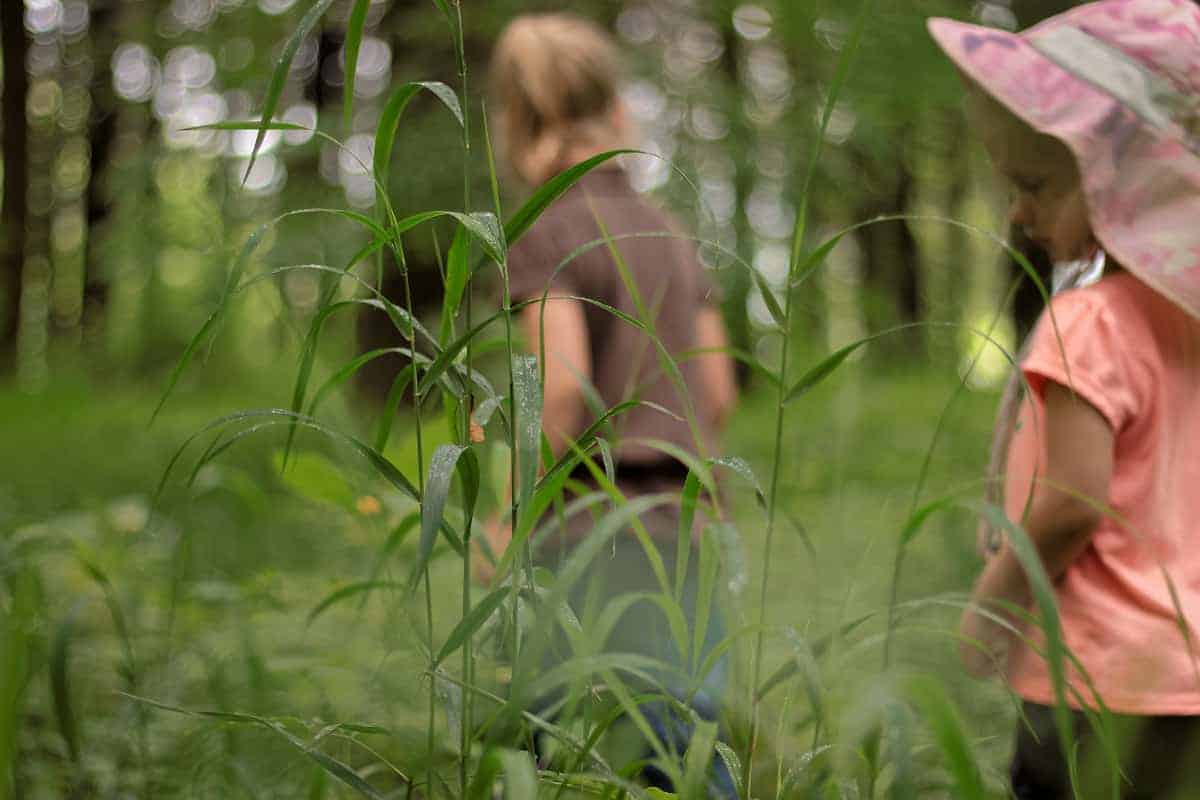
Tick bites
Sometimes a sneaky tick will circumvent your best attempts to keep it away. Or maybe your area, like our homestead, just has a lot of ticks. When you’ve been in the woods or tall grass, it’s best to check yourself, your children, and your pets for ticks immediately afterward. Check especially the areas around sock lines, waistbands, and hairlines. If you find and remove a tick promptly, you can often avoid any kind of reaction or illness.
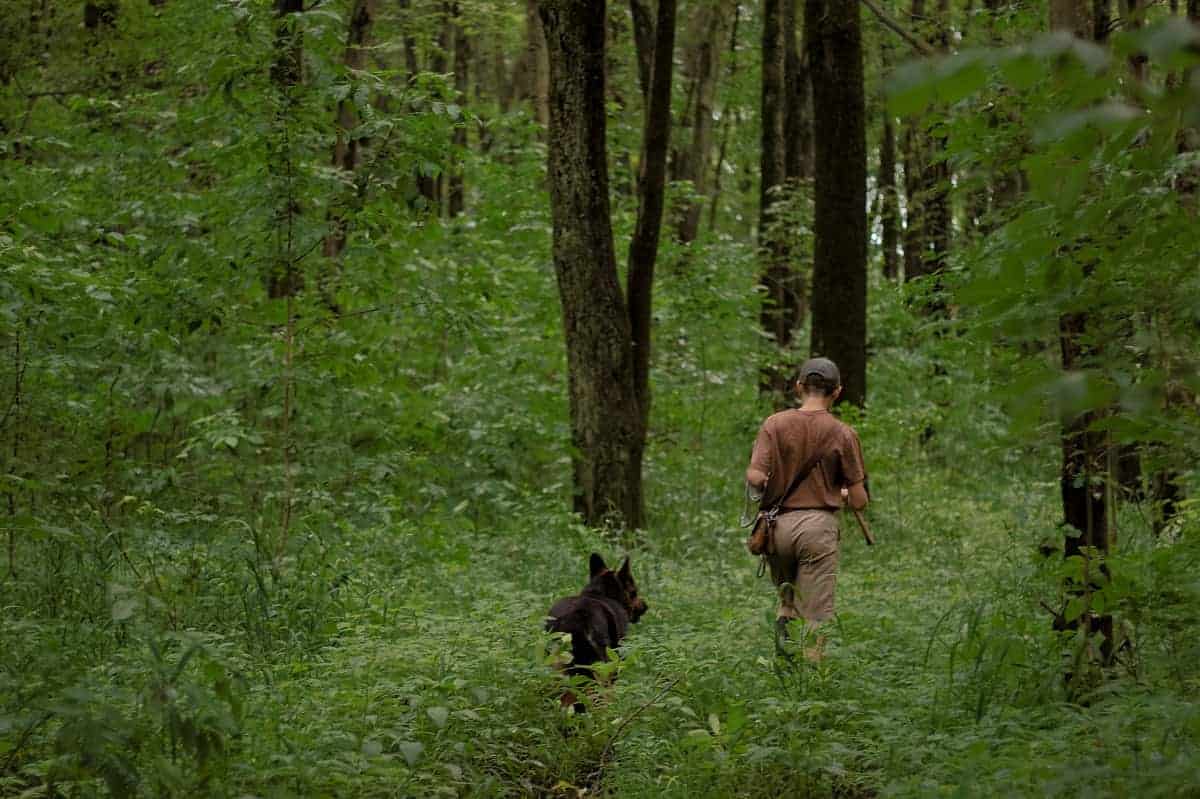
Tick removal
If you do find a tick on any member of your family, don’t panic! Get some tweezers, grasp close to the skin’s surface, and firmly pull the tick straight out. You want to make sure you get the entire tick and don’t leave the head embedded under the skin. I know, it’s freaky. Whether it’s on a child or a pet, my heart jumps into my throat every time one of my kids shouts, “I found a tick!” It’s happened several times lately because our homestead seems to have a lot of tick activity. I just can’t get used to it.
But, I have learned to successfully remove the whole tick, and so far we have avoided any kind of worrisome reactions. (If you put the tick in a bag and stick it in the freezer, you’ll have it on hand for testing if your child develops any kind of illness or reaction. This seems especially important if you are in an area not widely known for having tick-related illnesses. An tick-borne illness can be harder to get diagnosed, and having that tick available to show your doctor can be really helpful.)
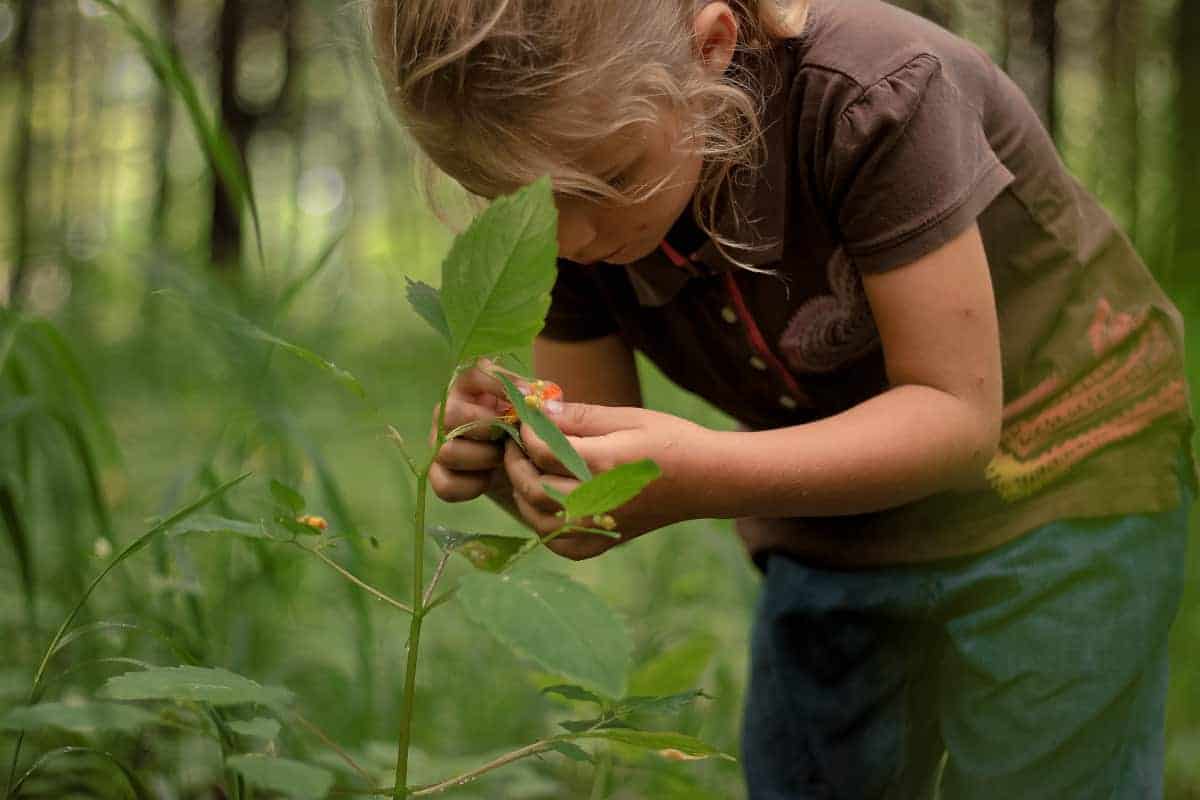
When tick bites turn bad
Watch the area around the bite for several days, keeping an eye out for redness, swelling, or the trademark “bulls-eye” rash of Lyme Disease. There are other tick-borne infections that can also cause a bulls-eye rash (such as STARI), you should call a doctor if you develop any kind of fever or rash after a tick bite. Getting prompt diagnosis and treatment for a tick-borne illness will allow a speedy recovery! This website has a lot of really helpful information on tick prevention, identification, illness, and removal.
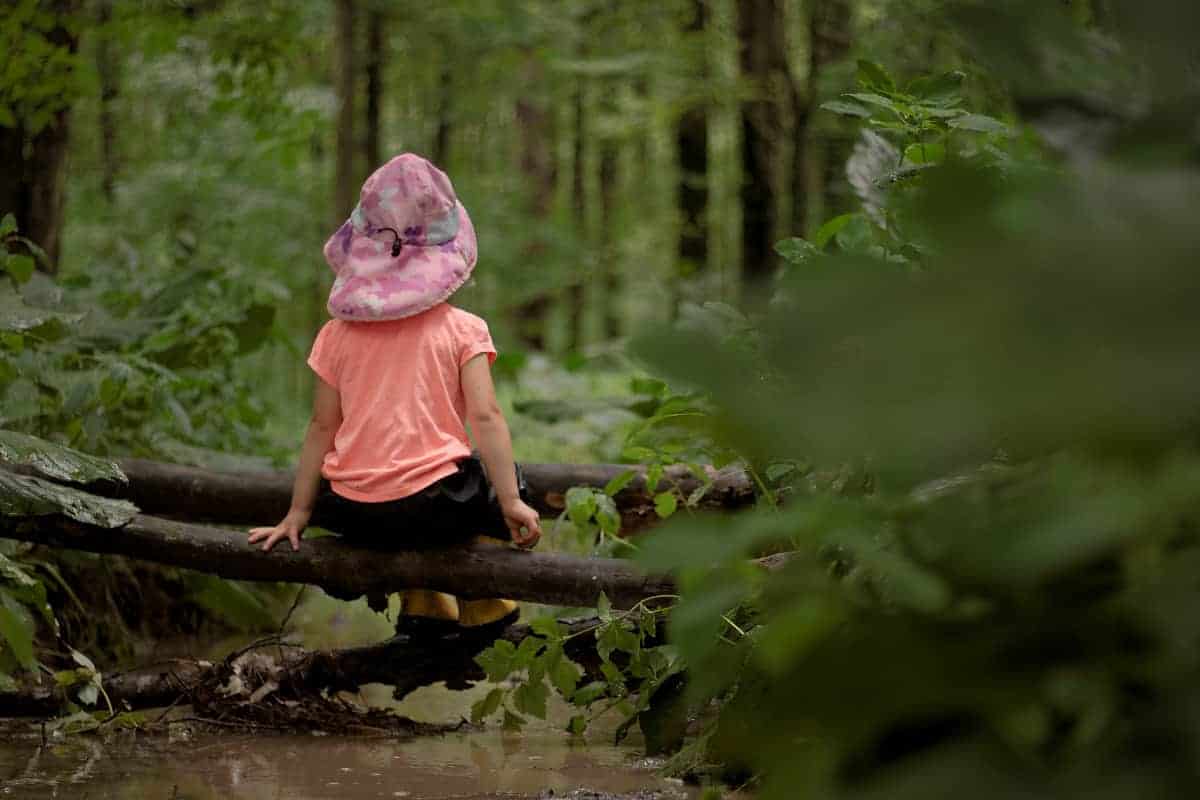
Mosquitoes
Who doesn’t despise the whine of a pesky mosquito in your ear? I think we’re all familiar with the seasonal plague of mosquitoes. They breed in stagnant water, thrive in wet areas, and come out when the air is still, especially in the evenings. Just the mention of them makes me itch. We live on the edge of the swampiest woods, and the mosquito issue is real. Their bites are itchy and irritating, but they can also carry nasty illnesses.
Protecting my children became a bigger deal to me as I realized that kids are more susceptible to mosquito bites. It seems like we adults have learned to notice and slap away mosquitoes a lot quicker than our oblivious young children. Some of my biggest mom fail moments are when a toddler wakes up with an eye swollen shut from a mosquito bite (my little ones are really allergic!). It happened again this week after we took an excursion back into Grandpa’s mosquito-laden woods. I failed to get insect repellent on my littlest one’s face and the mosquitoes found the tender skin near BOTH her eyes. For two days I wanted to cry every time I tried to see her sparkling blue eyes behind her puffy eyelids.
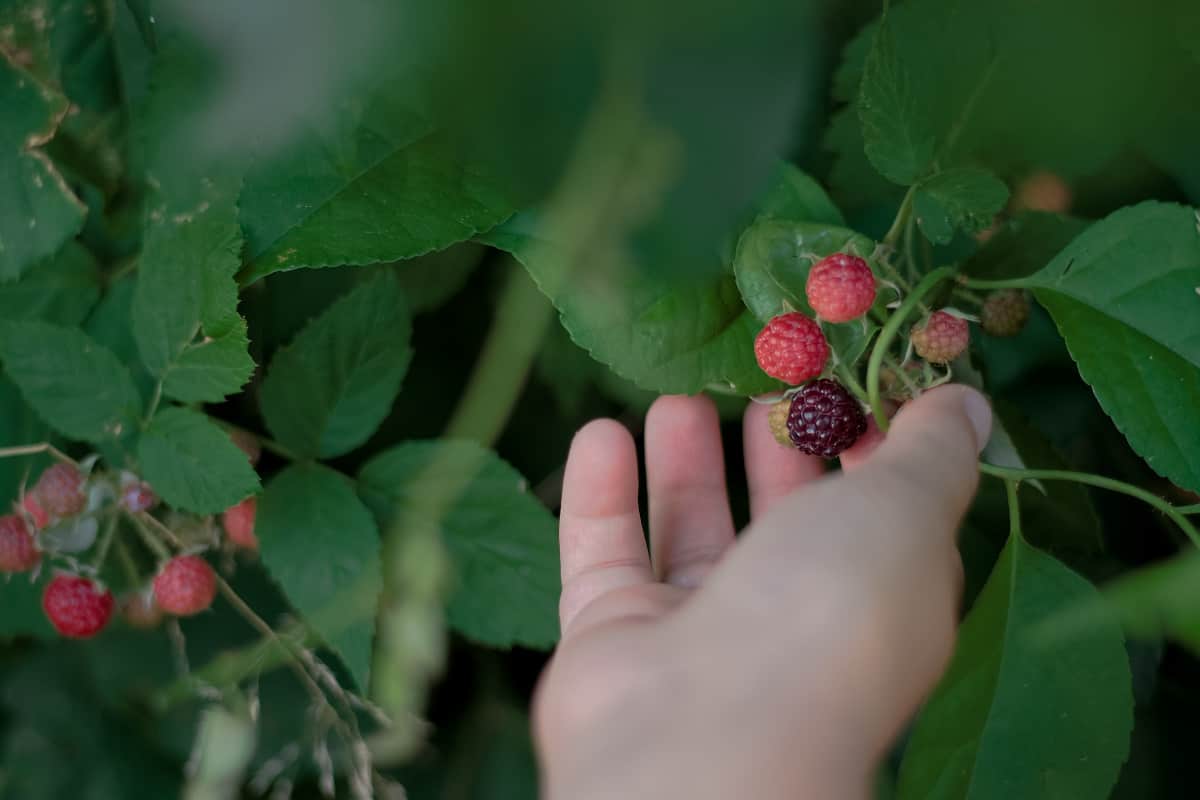
Mosquito prevention
Just like with ticks, there are two keys to preventing mosquito bites: covering the skin and using insect repellent. If you know you’re going to be in a swampy area, or sitting around outside in the evening, try to cover as much skin as possible. Bring along some lightweight long-sleeved overshirts, or dress your kids in shorts that roll down as pants. These little precautions help a lot to keep mosquitoes off the sensitive skin of our little ones.
And for the rest of the skin…there’s bug spray. I really don’t like using strong bug repellents if I can avoid it, especially around small children, but I think our littlest ones need extra help to protect themselves from mosquitoes. I’m always on the search for a good insect repellent that I feel safe using around young children and babies. We really like this plant-based product. But, like I learned this week–you have to apply spray everywhere you don’t want mosquitoes! A quick pass over the back of a hat won’t protect the face from aggressive mosquitoes. When we head back out into the woods this week to pick wild black raspberries, I’m planning to spray some repellent onto my hands and gently rub it on her face like I would sunscreen.
We’ve also been burning citronella candles and these insect repellent sticks when we’re outside in the evening, and they help discourage mosquitoes. A smoky campfire works, too! My daughter claims that a good smearing of mud really helps keep the mosquitoes off…but I haven’t tried that one.
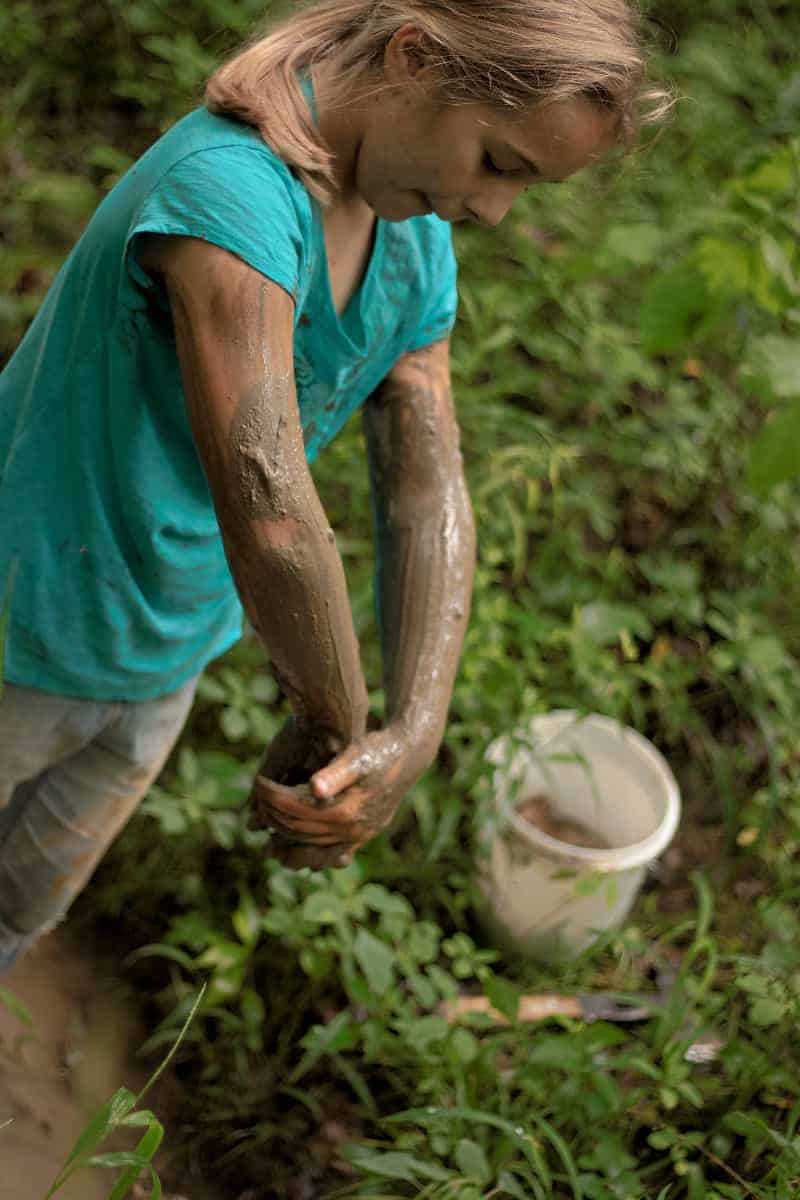
Mosquito bite treatment
As with poison ivy, if your kids do get mosquito bites, there are lots of products that make the reaction more tolerable. My favorites are a salve with llavender essential oil (one of the only essential oils universally considered safe for children) and Calagel. Mosquito bite reactions usually begin to disappear within a few days, and rarely need any medical attention. If your child should begin to run a fever or have a disturbing reaction, always consult your doctor.
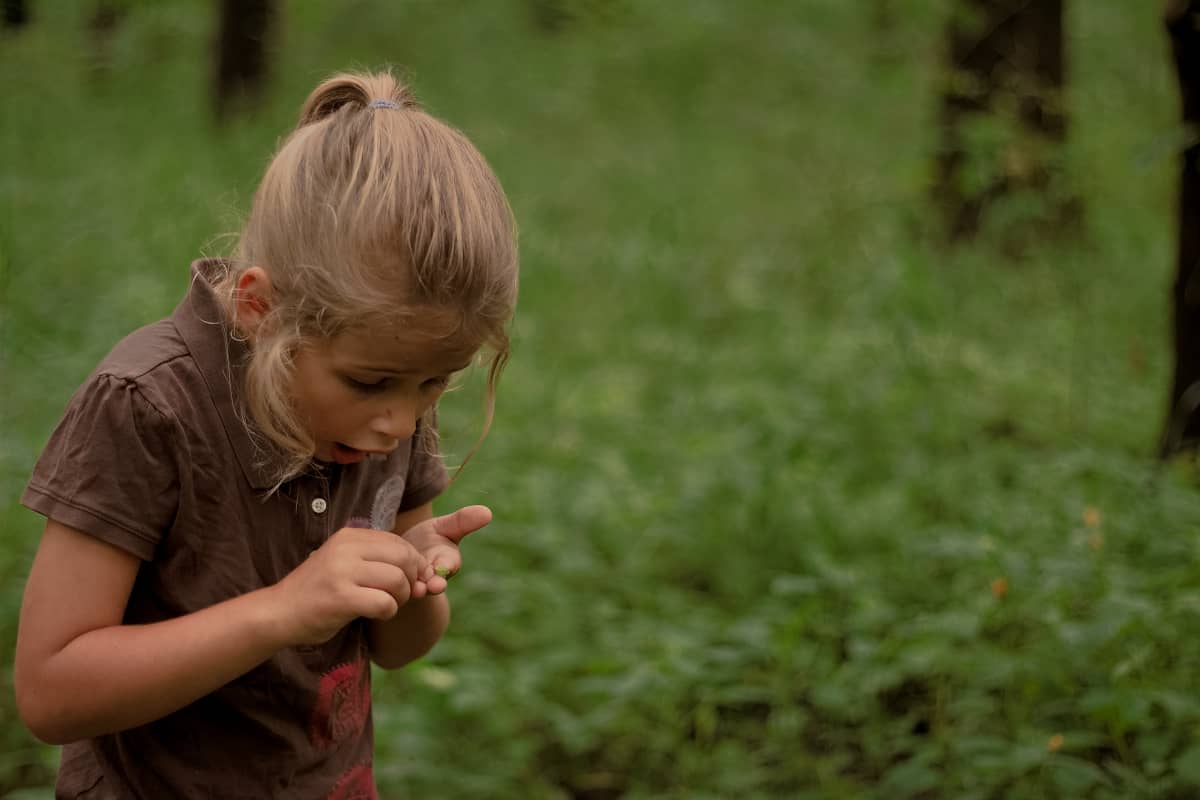
Enjoy your summer, despite the pests
Yes, poison ivy, mosquitoes and ticks are annoying and can cause problems. But many of the issues are preventable and unfortunately, they’re just another part of being outdoorsy. Don’t let these warm-weather problems keep you from experiencing the wonder, beauty and benefits of being outdoors! Know the risks in your area, find a good insect repellent, dress appropriately, and head outside! There’s a world of wonder waiting to be discovered.
What are your best tips for dealing with warm-weather pests?

About the author
Leslie is an Ohio farm girl and chaser of light, children, and sometimes chickens. She’s a lover of Jesus, wife to her high school sweetheart, and a homeschooling mom of four wild rascals who love the great outdoors as much as she does. As a family, they love hiking, camping, fishing, and just about any outdoor activity. She and her husband are just beginning the process of building a homestead from the ground up, doing most of the work themselves. Leslie has a lifelong obsession with writing and capturing everyday life from behind the lens.
You can find more from Leslie in the following locations:
Instagram: @c_l_allofus
Client work: @lalvisphotography
RWMC posts: Leslie Alvis

